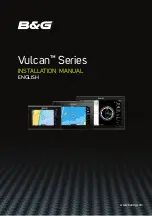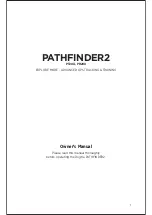
CAP 413
Radiotelephony Manual
Chapter 3 Page 1
Chapter 3
General Phraseology
1
General
1.1
Introduction
1.1.1
The phraseology detailed in this manual has been established for the purpose of
ensuring uniformity in RTF communications. Communications shall be concise and
unambiguous, using standard phraseology for all situations for which it is specified.
Obviously, it is not practicable to detail phraseology examples suitable for every
situation. However, if standard phrases are adhered to when composing a message,
any possible ambiguity will be reduced to a minimum. Only when standard
phraseology cannot serve an intended transmission, shall plain language be used.
1.1.2
Some abbreviations, which by their common usage have become part of aviation
terminology, may be spoken using their constituent letters rather than the spelling
alphabet, for example, ILS, QNH, RVR, etc., (see Chapter 1, paragraph 1.2).
1.1.3
For all transmissions, with the exception of those used for surveillance radar
approaches or precision radar approaches, the word 'degrees' shall be appended to
heading figures where the heading ends in zero, or in cases where confusion or
ambiguity may result.
1.1.4
For all transmissions, the word 'hectopascal' shall be appended to figures when
transmitting a pressure setting below 1000 hPa, or in cases where confusion or
ambiguity may result.
1.1.5
The following words may be omitted from transmissions provided that no confusion
or ambiguity may result:
a) 'Surface' and 'knots' in relation to surface wind direction and speed.
b) 'Degrees' in relation to surface wind direction.
c) 'Visibility', 'cloud' and 'height' in meteorological reports.
d) 'over', 'Roger' and 'out'.
1.1.6
The excessive use of courtesies should be avoided.
1.2
Level Reporting
1.2.1
Only basic level instructions are detailed in this Chapter. More comprehensive
phrases are contained in subsequent Chapters in the context in which they are most
commonly used.
1.2.2
The precise phraseology used in the transmission and acknowledgement of climb and
descent clearances will vary, depending upon the circumstances, traffic density and
nature of the flight operations.
1.2.3
However, care must be taken to ensure that misunderstandings are not generated as
a consequence of the phraseology employed during these phases of flight. For
example, levels may be reported as altitude, height or flight levels according to the
phase of flight and the altimeter setting. Therefore, when passing level messages,
the following conventions apply:
a) The word 'to' is to be omitted from messages relating to FLIGHT LEVELS.
b) All messages relating to an aircraft’s climb or descent to a HEIGHT or ALTITUDE
employ the word 'to' followed immediately by the word HEIGHT or ALTITUDE.
Furthermore, the initial message in any such RTF exchange will also include the
appropriate QFE or QNH.
17 November 2011
Summary of Contents for 413
Page 1: ...CAP 413 Radiotelephony Manual Edition 20 www caa co uk Safety Regulation Group ...
Page 2: ......
Page 3: ...CAP 413 Radiotelephony Manual Edition 20 Safety Regulation Group 17 November 2011 ...
Page 6: ...CAP 413 Radiotelephony Manual Amendment Number Amendment Date Incorporated by Incorporated on ...
Page 10: ...INTENTIONALLY LEFT BLANK ...
Page 18: ...INTENTIONALLY LEFT BLANK ...
Page 20: ...INTENTIONALLY LEFT BLANK ...
Page 68: ...INTENTIONALLY LEFT BLANK ...
Page 126: ...INTENTIONALLY LEFT BLANK ...
Page 162: ...INTENTIONALLY LEFT BLANK ...
Page 170: ...INTENTIONALLY LEFT BLANK ...
Page 178: ...INTENTIONALLY LEFT BLANK ...
Page 206: ...INTENTIONALLY LEFT BLANK ...
Page 248: ...INTENTIONALLY LEFT BLANK ...
Page 254: ...INTENTIONALLY LEFT BLANK ...
Page 264: ...INTENTIONALLY LEFT BLANK ...
















































